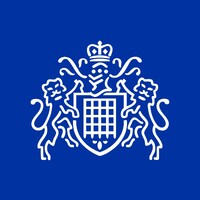Company Details
nsw-police-force
3,431
60,915
92212
nsw.gov.au
0
NSW_8323084
In-progress

NSW Police Force Company CyberSecurity Posture
nsw.gov.auThe NSW Police Force is: - Australia's oldest and largest police organisation; - one of the biggest in the English speaking world; - serves a population of seven million in the state of New South Wales, an 801,600 square kilometre area; - operates on land, sea and from the air; - provides community based policing from more than 500 police stations to a wide range of ethnic communities speaking more than 30 languages;
Company Details
nsw-police-force
3,431
60,915
92212
nsw.gov.au
0
NSW_8323084
In-progress
Between 750 and 799

 NPF Global Score (TPRM)
NPF Global Score (TPRM)XXXX

Description: The New South Wales (NSW) education department in Australia stated that their internal system had been a victim of a cyber attack. The department took some systems offline while conducting its investigation because protecting student and staff data is of the utmost importance. The department has reported the issue to the state's police and federal government organizations and collaborated with Cyber Security NSW to find a solution.
Description: The NSW Police leaked the emails of over 150 complainants. The Complainants contacted them in order to raise concerns regarding officers’ use of force following the Sydney Black Lives Matter protest. According to section 169A of the Police Act 1990 (NSW) a member of the NSW Police Force must not disclose to any person the identity of a complainant unless the disclosure is made in accordance with guidelines established by the Commissioner, with the consent of the complainant, in a situation where it is required by law, or for the purposes of any legal proceedings before a court or tribunal. It was a complete betrayal of public trust and accountability.
Description: The NSW government's QR code data breach accidently exposed the regional addresses of more than 500,000 organisations including defence sites, a missile maintenance unit and domestic violence shelters The addresses collected by the NSW government including correctional facilities, critical infrastructure networks including power stations and tunnel entry sites as well as dozens of shelters and crisis accommodation centres for women across the state was also found NSW data website. The cyber experts raised the alarm to the NSW government to secure the data immediately.
Description: A cyber attack on an Accellion-owned file transfer system has been identified as having an effect on Transport for New South Wales (TfNSW). Some Transport for NSW information was obtained prior to the attack on Accellion servers being stopped. According to TfNSW, the state government investigation is being managed by Cyber Security NSW with the aid of forensic experts. In order to investigate the implications of the incident, particularly how it may have affected customer data, the organisation said it is closely collaborating with Cyber Security NSW.
Description: In February 2021, **Transport for NSW**, an Australian government agency responsible for managing the state’s transport systems, fell victim to a **Clop ransomware attack**. The breach was part of a broader global campaign exploiting vulnerabilities in **Accellion’s File Transfer Appliance (FTA)**, a third-party file-sharing service used by the agency. While the full extent of the data compromise was not publicly disclosed, the attack exposed sensitive internal documents, including employee records, financial data, and potentially customer-related information. The Clop ransomware group, known for double-extortion tactics, threatened to leak stolen data unless a ransom was paid. Although Transport for NSW refused to negotiate, the incident disrupted operations, raised concerns over data security, and prompted an urgent review of cybersecurity protocols. The breach highlighted vulnerabilities in third-party vendor systems and underscored the growing threat of ransomware targeting critical public infrastructure. Authorities warned that the stolen data could be used for further phishing attacks or sold on the dark web, posing long-term risks to both the organization and affected individuals.


No incidents recorded for NSW Police Force in 2025.
No incidents recorded for NSW Police Force in 2025.
No incidents recorded for NSW Police Force in 2025.
NPF cyber incidents detection timeline including parent company and subsidiaries

The NSW Police Force is: - Australia's oldest and largest police organisation; - one of the biggest in the English speaking world; - serves a population of seven million in the state of New South Wales, an 801,600 square kilometre area; - operates on land, sea and from the air; - provides community based policing from more than 500 police stations to a wide range of ethnic communities speaking more than 30 languages;


Policing in South Africa. I am attached to the newly formed Directorate for Priority Crime Investigations. Formally I was attached to the Detecitve Service and have been conduction investigations for over 25 years. I have also been attached to the National Inspectorate Division of the SAPS for soem

The FBI Virtual Academy is the portal to all FBI training opportunities offered to our external partners. FBI Virtual Academy registration is open to all personnel serving in any agency within the criminal justice or intelligence community – including state, local, tribal, and international law enfo

Vi gör hela Sverige tryggt och säkert! Att arbeta inom polisen är ett av de finaste uppdrag man kan ha. Du bidrar till samhället genom att göra hela Sverige tryggt och säkert. Oavsett om du jobbar i en civil roll eller som polis, är möjligheterna att växa med en större uppgift många. Vi är Sverig

Gendarmería Nacional Argentina (GNA) es una Fuerza de Seguridad de naturaleza militar, que cumple funciones en la seguridad interior, defensa nacional, auxilio a la Justicia Federal y apoyo a la Política Exterior de la RA. Es una de las cuatro Fuerzas que integran el Ministerio de Seguridad de l

he Government of India, officially known as the Union Government, and also known as the Central Government, was established by the Constitution of India, and is the governing authority of a union of 28 states and seven union territories, collectively called the Republic of India. It is seated in New

The Metropolitan Police Service is famed around the world and has a unique place in the history of policing. Our headquarters at New Scotland Yard - and its iconic revolving sign - has provided the backdrop to some of the most high profile and complex law enforcement investigations the world has e

Politiemensen staan midden in de maatschappij, dicht op het nieuws. De politie is daar waar het gebeurt. Het optreden van agenten ligt altijd onder een vergrootglas. Bij de politie ben je 24 uur per dag en voor iedereen in onze diverse samenleving. Integer, moedig, betrouwbaar en verbindend zijn daa

Welcome to the Official NYPD LinkedIn Page. For emergencies, dial 911. To submit crime tips & information, visit www.NYPDcrimestoppers.com or call 800-577-TIPS. The mission of the New York City Police Department is to enhance the quality of life in New York City by working in partnership with the c

The Singapore Police Force (SPF) is a uniformed organisation under the purview of the Ministry of Home Affairs. The mission of the SPF is to prevent, deter and detect crime to ensure the safety and security of Singapore. The Singapore Police Force’s official LinkedIn page should NOT be used for
.png)
Australians could be at serious risk if data stolen during a worldwide cyberattack is used to steal identities and accrue debts in their...
Western Sydney University has been hit by another alleged cybersecurity breach after mass emails were sent ...
Western Sydney University has contacted NSW Police over two fraudulent emails sent to students and alumni on Monday night.
NSW Police Force is recruiting a delivery director to lead a major transformation of its network infrastructure following a $50-million...
Western Sydney University told Cyber Daily it was thankful for the assistance of NSW Police in the takedown of the notorious hacker.
Police believe a former Western Sydney University student allegedly escalated from hacking into the uni's servers for free parking to...
Former student identified as Western Sydney University hacker, charged by Cybercrime Squad detectives. Sydney,Thursday, 26 June 2025...
A former student allegedly demanded about $40,000 worth of cryptocurrency during a series of cyber attacks on a university.
A 27-year-old former student of Western Sydney University has been charged over a series of cyberattacks that impacted the educational institution.

Explore insights on cybersecurity incidents, risk posture, and Rankiteo's assessments.
The official website of NSW Police Force is http://www.police.nsw.gov.au/.
According to Rankiteo, NSW Police Force’s AI-generated cybersecurity score is 771, reflecting their Fair security posture.
According to Rankiteo, NSW Police Force currently holds 0 security badges, indicating that no recognized compliance certifications are currently verified for the organization.
According to Rankiteo, NSW Police Force is not certified under SOC 2 Type 1.
According to Rankiteo, NSW Police Force does not hold a SOC 2 Type 2 certification.
According to Rankiteo, NSW Police Force is not listed as GDPR compliant.
According to Rankiteo, NSW Police Force does not currently maintain PCI DSS compliance.
According to Rankiteo, NSW Police Force is not compliant with HIPAA regulations.
According to Rankiteo,NSW Police Force is not certified under ISO 27001, indicating the absence of a formally recognized information security management framework.
NSW Police Force operates primarily in the Law Enforcement industry.
NSW Police Force employs approximately 3,431 people worldwide.
NSW Police Force presently has no subsidiaries across any sectors.
NSW Police Force’s official LinkedIn profile has approximately 60,915 followers.
NSW Police Force is classified under the NAICS code 92212, which corresponds to Police Protection.
No, NSW Police Force does not have a profile on Crunchbase.
Yes, NSW Police Force maintains an official LinkedIn profile, which is actively utilized for branding and talent engagement, which can be accessed here: https://www.linkedin.com/company/nsw-police-force.
As of November 27, 2025, Rankiteo reports that NSW Police Force has experienced 5 cybersecurity incidents.
NSW Police Force has an estimated 1,471 peer or competitor companies worldwide.
Incident Types: The types of cybersecurity incidents that have occurred include Data Leak, Breach, Cyber Attack and Ransomware.
Detection and Response: The company detects and responds to cybersecurity incidents through an remediation measures with cyber experts raised the alarm to the nsw government to secure the data immediately, and third party assistance with cyber security nsw, and and containment measures with taking some systems offline, and third party assistance with forensic experts..
Title: NSW Government QR Code Data Breach
Description: The NSW government's QR code data breach accidentally exposed the regional addresses of more than 500,000 organisations including defence sites, a missile maintenance unit, and domestic violence shelters. The addresses collected by the NSW government including correctional facilities, critical infrastructure networks including power stations and tunnel entry sites as well as dozens of shelters and crisis accommodation centres for women across the state was also found on NSW data website. Cyber experts raised the alarm to the NSW government to secure the data immediately.
Type: Data Breach
Attack Vector: Accidental Exposure
Title: NSW Police Email Leak
Description: The NSW Police leaked the emails of over 150 complainants who raised concerns regarding officers’ use of force following the Sydney Black Lives Matter protest.
Type: Data Breach
Title: Cyber Attack on NSW Education Department
Description: The New South Wales (NSW) education department in Australia stated that their internal system had been a victim of a cyber attack. The department took some systems offline while conducting its investigation because protecting student and staff data is of the utmost importance. The department has reported the issue to the state's police and federal government organizations and collaborated with Cyber Security NSW to find a solution.
Type: Cyber Attack
Title: Cyber Attack on Transport for New South Wales via Accellion File Transfer System
Description: A cyber attack on an Accellion-owned file transfer system has been identified as having an effect on Transport for New South Wales (TfNSW). Some Transport for NSW information was obtained prior to the attack on Accellion servers being stopped. According to TfNSW, the state government investigation is being managed by Cyber Security NSW with the aid of forensic experts. In order to investigate the implications of the incident, particularly how it may have affected customer data, the organisation said it is closely collaborating with Cyber Security NSW.
Type: Data Breach
Attack Vector: Exploitation of Vulnerability
Vulnerability Exploited: Accellion File Transfer System
Title: Transport for NSW Clop Ransomware Breach (2021)
Description: In February 2021, Transport for NSW, an Australian government agency responsible for transport infrastructure, was breached by the Clop ransomware group.
Date Detected: 2021-02
Type: ransomware
Threat Actor: Clop ransomware group
Motivation: financial gaindata exfiltration
Common Attack Types: The most common types of attacks the company has faced is Data Leak.
Identification of Attack Vectors: The company identifies the attack vectors used in incidents through Accellion File Transfer System.

Data Compromised: Regional addresses, Defence sites, Missile maintenance unit, Domestic violence shelters, Correctional facilities, Critical infrastructure networks, Power stations, Tunnel entry sites, Shelters and crisis accommodation centres

Data Compromised: Emails of complainants
Brand Reputation Impact: Public trust betrayal and accountability issues
Legal Liabilities: Violation of section 169A of the Police Act 1990 (NSW)

Data Compromised: Customer Data
Systems Affected: Accellion File Transfer System

Commonly Compromised Data Types: The types of data most commonly compromised in incidents are Addresses, , Emails and Customer Data.

Entity Name: NSW Government
Entity Type: Government
Industry: Public Sector
Location: New South Wales, Australia

Entity Name: NSW Police
Entity Type: Government Agency
Industry: Law Enforcement
Location: New South Wales, Australia
Customers Affected: 150

Entity Name: New South Wales Education Department
Entity Type: Government Department
Industry: Education
Location: New South Wales, Australia

Entity Name: Transport for New South Wales
Entity Type: Government Agency
Industry: Transportation
Location: New South Wales, Australia

Entity Name: Transport for NSW
Entity Type: government agency
Industry: transportation
Location: New South Wales, Australia

Remediation Measures: Cyber experts raised the alarm to the NSW government to secure the data immediately

Third Party Assistance: Cyber Security NSW
Containment Measures: Taking some systems offline

Third Party Assistance: Forensic Experts
Third-Party Assistance: The company involves third-party assistance in incident response through Cyber Security NSW, Forensic Experts.

Type of Data Compromised: Addresses
Number of Records Exposed: 500,000
Sensitivity of Data: High

Type of Data Compromised: Emails
Number of Records Exposed: 150
Sensitivity of Data: Moderate
Personally Identifiable Information: Emails

Type of Data Compromised: Customer Data

Data Encryption: True
Prevention of Data Exfiltration: The company takes the following measures to prevent data exfiltration: Cyber experts raised the alarm to the NSW government to secure the data immediately, .
Handling of PII Incidents: The company handles incidents involving personally identifiable information (PII) through by taking some systems offline.

Ransomware Strain: Clop
Data Encryption: True
Data Exfiltration: True

Regulations Violated: Section 169A of the Police Act 1990 (NSW),

Source: NSW Government QR Code Data Breach

Source: Transport for New South Wales
Additional Resources: Stakeholders can find additional resources on cybersecurity best practices at and Source: NSW Government QR Code Data Breach, and Source: Transport for New South Wales.

Investigation Status: Ongoing

Investigation Status: Ongoing

Entry Point: Accellion File Transfer System
Post-Incident Analysis Process: The company's process for conducting post-incident analysis is described as Cyber Security NSW, Forensic Experts.
Last Attacking Group: The attacking group in the last incident was an Clop ransomware group.
Most Recent Incident Detected: The most recent incident detected was on 2021-02.
Most Significant Data Compromised: The most significant data compromised in an incident were Regional addresses, Defence sites, Missile maintenance unit, Domestic violence shelters, Correctional facilities, Critical infrastructure networks, Power stations, Tunnel entry sites, Shelters and crisis accommodation centres, , Emails of complainants, , Customer Data and .
Third-Party Assistance in Most Recent Incident: The third-party assistance involved in the most recent incident was Cyber Security NSW, Forensic Experts.
Containment Measures in Most Recent Incident: The containment measures taken in the most recent incident was Taking some systems offline.
Most Sensitive Data Compromised: The most sensitive data compromised in a breach were Missile maintenance unit, Critical infrastructure networks, Tunnel entry sites, Regional addresses, Shelters and crisis accommodation centres, Customer Data, Defence sites, Domestic violence shelters, Emails of complainants, Power stations and Correctional facilities.
Number of Records Exposed in Most Significant Breach: The number of records exposed in the most significant breach was 500.1K.
Most Recent Source: The most recent source of information about an incident are NSW Government QR Code Data Breach and Transport for New South Wales.
Current Status of Most Recent Investigation: The current status of the most recent investigation is Ongoing.
Most Recent Entry Point: The most recent entry point used by an initial access broker was an Accellion File Transfer System.
.png)
Angular is a development platform for building mobile and desktop web applications using TypeScript/JavaScript and other languages. Prior to versions 19.2.16, 20.3.14, and 21.0.1, there is a XSRF token leakage via protocol-relative URLs in angular HTTP clients. The vulnerability is a Credential Leak by App Logic that leads to the unauthorized disclosure of the Cross-Site Request Forgery (XSRF) token to an attacker-controlled domain. Angular's HttpClient has a built-in XSRF protection mechanism that works by checking if a request URL starts with a protocol (http:// or https://) to determine if it is cross-origin. If the URL starts with protocol-relative URL (//), it is incorrectly treated as a same-origin request, and the XSRF token is automatically added to the X-XSRF-TOKEN header. This issue has been patched in versions 19.2.16, 20.3.14, and 21.0.1. A workaround for this issue involves avoiding using protocol-relative URLs (URLs starting with //) in HttpClient requests. All backend communication URLs should be hardcoded as relative paths (starting with a single /) or fully qualified, trusted absolute URLs.
Forge (also called `node-forge`) is a native implementation of Transport Layer Security in JavaScript. An Uncontrolled Recursion vulnerability in node-forge versions 1.3.1 and below enables remote, unauthenticated attackers to craft deep ASN.1 structures that trigger unbounded recursive parsing. This leads to a Denial-of-Service (DoS) via stack exhaustion when parsing untrusted DER inputs. This issue has been patched in version 1.3.2.
Forge (also called `node-forge`) is a native implementation of Transport Layer Security in JavaScript. An Integer Overflow vulnerability in node-forge versions 1.3.1 and below enables remote, unauthenticated attackers to craft ASN.1 structures containing OIDs with oversized arcs. These arcs may be decoded as smaller, trusted OIDs due to 32-bit bitwise truncation, enabling the bypass of downstream OID-based security decisions. This issue has been patched in version 1.3.2.
Suricata is a network IDS, IPS and NSM engine developed by the OISF (Open Information Security Foundation) and the Suricata community. Prior to versions 7.0.13 and 8.0.2, working with large buffers in Lua scripts can lead to a stack overflow. Users of Lua rules and output scripts may be affected when working with large buffers. This includes a rule passing a large buffer to a Lua script. This issue has been patched in versions 7.0.13 and 8.0.2. A workaround for this issue involves disabling Lua rules and output scripts, or making sure limits, such as stream.depth.reassembly and HTTP response body limits (response-body-limit), are set to less than half the stack size.
Suricata is a network IDS, IPS and NSM engine developed by the OISF (Open Information Security Foundation) and the Suricata community. In versions from 8.0.0 to before 8.0.2, a NULL dereference can occur when the entropy keyword is used in conjunction with base64_data. This issue has been patched in version 8.0.2. A workaround involves disabling rules that use entropy in conjunction with base64_data.

Get company history
















Every week, Rankiteo analyzes billions of signals to give organizations a sharper, faster view of emerging risks. With deeper, more actionable intelligence at their fingertips, security teams can outpace threat actors, respond instantly to Zero-Day attacks, and dramatically shrink their risk exposure window.
Identify exposed access points, detect misconfigured SSL certificates, and uncover vulnerabilities across the network infrastructure.
Gain visibility into the software components used within an organization to detect vulnerabilities, manage risk, and ensure supply chain security.
Monitor and manage all IT assets and their configurations to ensure accurate, real-time visibility across the company's technology environment.
Leverage real-time insights on active threats, malware campaigns, and emerging vulnerabilities to proactively defend against evolving cyberattacks.




